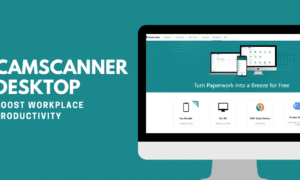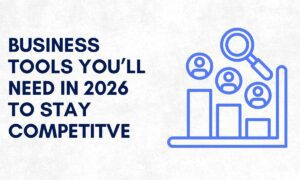I’ve spent decades watching transformative technologies follow predictable patterns. First the hype, then skepticism, and finally, when the right conditions align, adoption that reshapes entire industries.
We’re at the adoption point with agentic AI. According to research by Gartner, by 2026 more than 80% of product lifecycle management (PLM) vendors will have incorporated AI capabilities into their platforms for key functional areas, compared with less than 40% in 2025.
Agentic AI is like hiring a seasoned operations manager who never sleeps. In the product development world, change is a constant. A supplier raises prices. A component fails in the field. Tariffs shift overnight. Each change ripples through the business, but most companies can’t see the full impact until it’s too late.
Connected Data Changes the Equation
Traditional product management systems track the change transaction (what changed, when, and who approved it), but they don’t answer business questions that matter:
-What will this cost us?
-Which customers will be affected?
-How does this impact our forecast?
For these questions, someone has to manually pull data from engineering, quality, operations, finance, etc. and spend days reconciling spreadsheets. By the time they have the answer, the damage is done.
Agentic AI turns impact analysis from a reactive exercise to a proactive advantage. But, it only works when product data is connected across the enterprise, from design through manufacturing, sales, marketing, and field service.
Connecting product details with commercial SKUs, supply chain, and serialized field assets unlocks insight that helps make faster, smarter business decisions. The business impact is immediate:
- Cost visibility: When tariffs hit, instantly identify which products are affected and by how much, before margins erode.
- Waste reduction: Understand the cost of materials that need to be scrapped before you place the next order.
- Revenue protection: See how long a change will take to implement and what it means for customer commitments and forecasts.
- Supply chain agility: Identify which parts need alternate sourcing to meet demand before shortages occur.
- Customer retention: Proactively service customers when part failures arise to avoid downtime.
But here’s where many executives get it wrong: they assume agentic AI means they can finally ditch their SaaS platforms. That couldn’t be further from the truth.
The Infrastructure Reality Check
Having implemented legacy PLM systems for manufacturers back in my Accenture days (systems that are remarkably still limping along today) I’ve seen what happens when companies chase shiny new technology without proper infrastructure foundations.
Agents without structured systems are like giving a race car driver the keys to a Formula 1 car but no track to drive on. Sure, the car is impressive, but without proper guardrails, you’re headed for disaster.
This is especially true in regulated industries where failure to follow specific processes, or retain audit trails, can completely shut down a business. Consider a manufacturer with 10 years of quality inspection records. An agent analyzing this historical transaction data might notice that a compliance field has been completed less than 50% of the time without business impact. Based on the pattern, the agent could determine the field is unimportant and stop prompting user completion. But, that field might be an FDA reporting requirement that hasn’t been audited yet. The moment a regulatory inspection occurs, that missing data becomes a compliance violation that could shut down production. An underlying SaaS layer would address this by enforcing which fields are mandatory for the agent, regardless of historical completion rates.
The solution isn’t to abandon the agent, it is to ensure the underlying SaaS platform enforces the business rules that the agent needs to follow. Then the agent can become incredibly effective once it understands which processes are non-negotiable.
Data Governance Isn’t Optional
Here’s a litmus test for your organization: Can your current systems identify an AI agent who should and shouldn’t have access to proprietary product specifications or employee personal data? If the answer is no, you’re not ready for agentic AI at scale.
SaaS platforms provide the data governance structure that agents desperately need. Without it, you face two bad options: either you can’t enforce permissions at all, or you spend significant effort manually recreating permissions into AI models. Then, when permissions change your agents will run amok, accessing data they shouldn’t, or making decisions based on outdated rules. You’re essentially giving a powerful automation tool access to everything with no way to enforce permissions, audit trails, or compliance requirements.
This is especially critical in regulated industries. When an FDA auditor asks to see the decision trail for a product recall, you need more than “the AI agent handled it.” You need documented processes, approval workflows, and clear accountability, all things that mature SaaS platforms deliver.
Unified Data in Saas Provides the End-to-End Advantage
Real business value for manufacturers emerges when product data flows seamlessly across systems like product lifecycle management (PLM), enterprise resource planning (ERP), and computer aided design (CAD), and suppliers through a unified SaaS backbone. With this level of business collaboration, manufacturers can easily reduce product development cycles by 30% when AI agents access comprehensive, connected data rather than siloed information.
Time-to-market improvements quickly scale when agents can automatically cross-reference engineering changes with supplier capacity, regulatory requirements, and production schedules, all because their SaaS platform connected these previously isolated systems.
Agentic AI – The Death of On-Premise Solutions?
This is where the transformation becomes inevitable. On-premise solutions simply can’t provide the data structure, configurability, or real-time connectivity that agents require. Companies still running 20+ year old legacy PLM or ERP systems are approaching a critical decision point.
The question isn’t whether to move to the cloud, it’s whether to do it strategically now or be forced into it later when your competitive position has eroded.
Agentic AI and SaaS is a partnership imperative. Agents provide the intelligence layer; SaaS provides the operational foundation. Neither works effectively without the other in an enterprise environment.
For manufacturers evaluating solutions, focus on providers offering tightly integrated agents within established SaaS platforms, not standalone AI tools with impressive demos but no operational guardrails.
Companies that chase AI without proper infrastructure will find themselves managing expensive, unreliable automation that creates more problems than it solves.
The choice is straightforward: build on a foundation designed for scale, or prepare to rebuild when your current approach hits its limits.
Ross Meyercord is CEO of Propel Software and former Global CIO of Salesforce. He has over 35 years of experience leading enterprise technology strategy and scaling SaaS companies.



































